The Essential Guide to Men’s Groomer
The Essential Guide to Men’s Groomer is no longer just a luxury for men; it’s an essential part of a modern lifestyle. Once considered rudimentary, men’s grooming has evolved significantly through history, from the simple routines of our ancestors to today’s sophisticated products and techniques. This guide delves into everything you need to know to elevate your grooming game, from hair care to skincare and beyond.
Understanding Your Skin Type: Men’s Groomer
Identifying Your Skin Type
Knowing your skin type is the first step toward a tailored skincare regimen that addresses your specific needs. Skin types vary widely, but they can generally be classified into four major categories: Men’s grooming
- Dry Skin: This type is characterized by a lack of moisture in the epidermis. If your skin often feels tight, especially after cleansing, and you notice flaking or scaling, it’s likely you have dry skin. This type requires products that hydrate and help maintain the skin’s natural barrier.
- Oily Skin: Oily skin is identified by excess sebum production, leading to a persistent shine on your face and often large, visible pores. This type benefits from products that regulate oil production without stripping the skin of its natural oils.
- Combination Skin: Combination skin means you have both oily and dry areas. The T-zone (forehead, nose, and chin) tends to be oily, while the cheeks remain dry. Managing this skin type involves using various products to address the differing needs of these areas.
- Sensitive Skin: If your skin reacts easily to products or environmental changes, showing signs of redness, itching, or burning, you likely have sensitive skin. It’s important to use gentle products designed to soothe and reduce irritation.
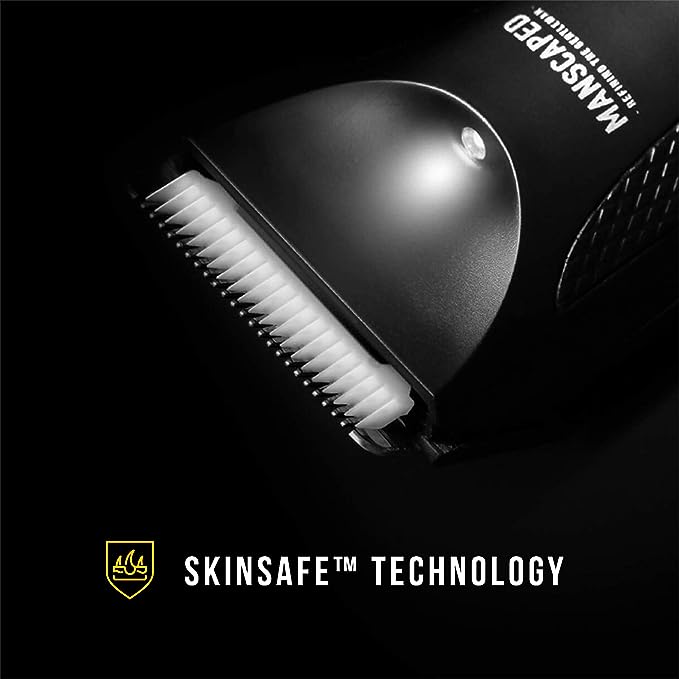
Customizing Your Skincare Routine
Men’s Grooming each skin type requires a different approach to ensure optimal health and appearance:
- For Dry Skin: Look for rich creams and moisturizers that contain ingredients like hyaluronic acid, glycerin, and ceramides, which are great for locking in moisture. Avoid harsh, drying cleansers and alcohol-based toners that can strip your skin of its natural oils.
- For Oily Skin: Use foaming cleansers and light moisturizers or gels that are non-comedogenic, meaning they won’t clog pores. Products containing salicylic acid or benzoyl peroxide can help control acne breakouts and manage oil production.
- For Combination Skin: You might need to use different products on different areas of your face. A gentle cleanser and a light moisturizer should suffice, applying heavier products only where needed, typically on the cheeks.
- For Sensitive Skin: Choose products that are fragrance-free, hypoallergenic, and formulated without potential irritants like alcohol and synthetic dyes. Ingredients like aloe vera, chamomile, and green tea are known for their soothing properties.
Understanding and addressing your skin type with the appropriate products and routines is crucial in maintaining its health, preventing future issues, and enhancing your overall grooming regimen. By focusing on the needs specific to your skin type, you can achieve a balanced, healthy complexion that complements the rest of your grooming efforts.
Hair Care Essentials
Choosing the Right Hair Products: Men’s Groomer
The right hair care products can significantly improve the look and feel of your hair, but with so many options available, selecting the best products can be daunting. Here’s how to choose wisely based on your hair type and concerns:
- Shampoos: Opt for a shampoo that matches your scalp condition. If you have oily hair, look for clarifying or balancing shampoos that remove excess oil without stripping the scalp. For dry hair, hydrating shampoos with ingredients like argan oil or coconut oil can add moisture and prevent breakage.
- Conditioners: Conditioners help restore moisture and elasticity to hair after shampooing. Those with fine hair should choose lightweight conditioners that won’t weigh hair down, whereas thick or curly hair types might benefit from richer formulas.
- Styling Products: Gels, pomades, and waxes can sculpt and hold your hairstyle in place. Gels provide a sleek, shiny finish, ideal for a more polished look. Pomades offer a softer, more flexible hold for styles that need some movement. Waxes are great for adding texture and definition, especially in shorter hairstyles.
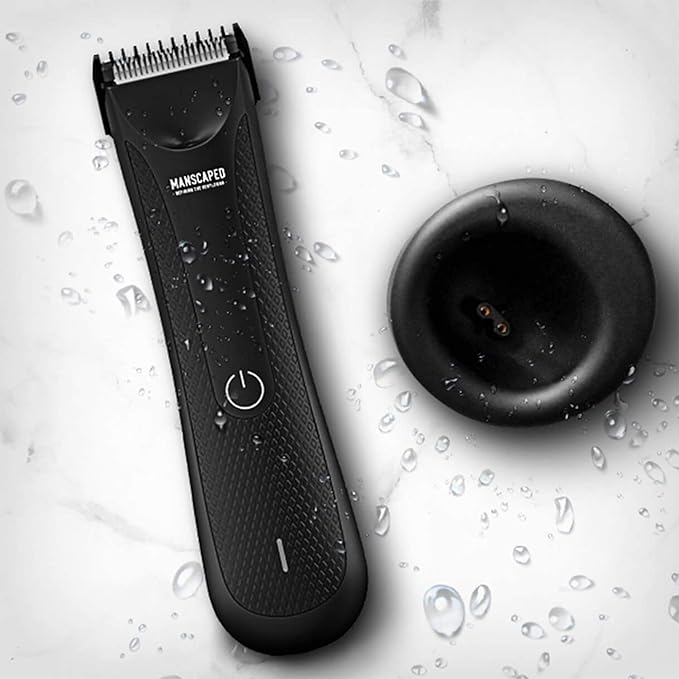
Common Hair Problems and Solutions
Addressing specific hair issues with targeted treatments can help maintain your hair’s health and appearance:
- Dandruff: This common scalp issue can be embarrassing and uncomfortable. Look for shampoos containing zinc pyrithione or selenium sulfide, which are effective at combating flaky, itchy scalp conditions.
- Hair Loss: Many men experience hair thinning or loss as they age. Products containing minoxidil can help slow hair loss and in some cases even regrow hair. It’s important to start treatment as soon as you notice thinning to maximize results.
- Greying: While some choose to embrace their grey, others may wish to cover it. Quality hair dyes designed for men can provide natural-looking color and are typically easy to use at home. Opt for ammonia-free products to avoid damaging the hair.
- Frizz: Frizz can ruin a well-groomed look. Use serums or leave-in conditioners that tame frizz and flyaways, adding a polished finish to your style. Products with silicone or oils can coat the hair, smoothing down the cuticle and reducing frizz.
The Art of Shaving
Preparing Your Skin for a Shave
The key to a close and comfortable shave is proper skin preparation. Here’s how to prepare your skin for the best possible results:
- Cleanse Your Face: Always start with a clean face. Use a mild cleanser to remove dirt and excess oil. This reduces the chance of irritation and helps the razor glide more smoothly.
- Exfoliate: A gentle exfoliation can make a big difference. It helps remove dead skin cells and can prevent ingrown hairs. Use a scrub or a chemical exfoliant suitable for your skin type, focusing on the beard area but being careful not to irritate the skin.
- Pre-Shave Oil: Applying a pre-shave oil can soften the beard and prepare the skin, providing a protective layer that decreases the likelihood of razor burn or cuts.
- Use Warm Water: Hydrating your beard with warm water before shaving can significantly soften the hair, making it easier to cut. A warm towel held against the skin for a couple of minutes is an effective way to do this.
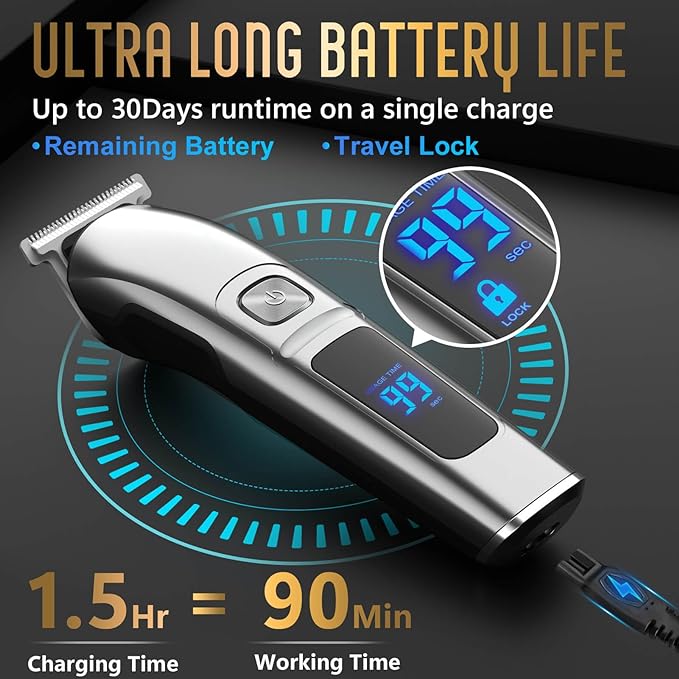
Shaving Techniques and Tools
The right tools and techniques are crucial for a smooth shave without irritation:
- Choosing a Razor: Whether you prefer a traditional safety razor, a straight razor, or a modern multi-blade razor, make sure it is sharp and clean. A dull blade can cause irritation and will not provide a close shave.
- Shaving Cream or Gel: Apply a high-quality shaving cream or gel. Look for products that create a rich lather; this provides more cushion and lubrication, which helps protect the skin from the razor blade.
- Technique: Shave in the direction of hair growth to minimize irritation. For a closer shave, you can re-lather and carefully shave against the grain on a second pass. However, if you have sensitive skin, it might be best to avoid shaving against the grain.
- Aftercare: Rinse your face with cool water to close the pores and apply an aftershave balm or moisturizer. Choose a product that soothes and hydrates the skin, ideally one without alcohol to avoid drying out the skin.
- Maintaining Your Razor: After each shave, clean and dry your razor thoroughly to prevent bacteria build-up and rust. Store it in a dry place to extend its life and maintain its sharpness.
Advanced Shaving Techniques
For those looking to elevate their shaving game:
- Layering Products: Using multiple products such as a pre-shave oil, followed by a shaving cream, and finishing with a quality aftershave can enhance the shaving experience and improve skin condition.
- Technological Aids: Consider using a shaving brush to apply the cream or gel. This tool helps lift the hair and exfoliate the skin, making the shave smoother and closer.
- Cold Water Shave: Though less common, using cold water to shave can tighten the skin, providing a different experience that some find gives a closer shave and reduced irritation.
Beard Maintenance
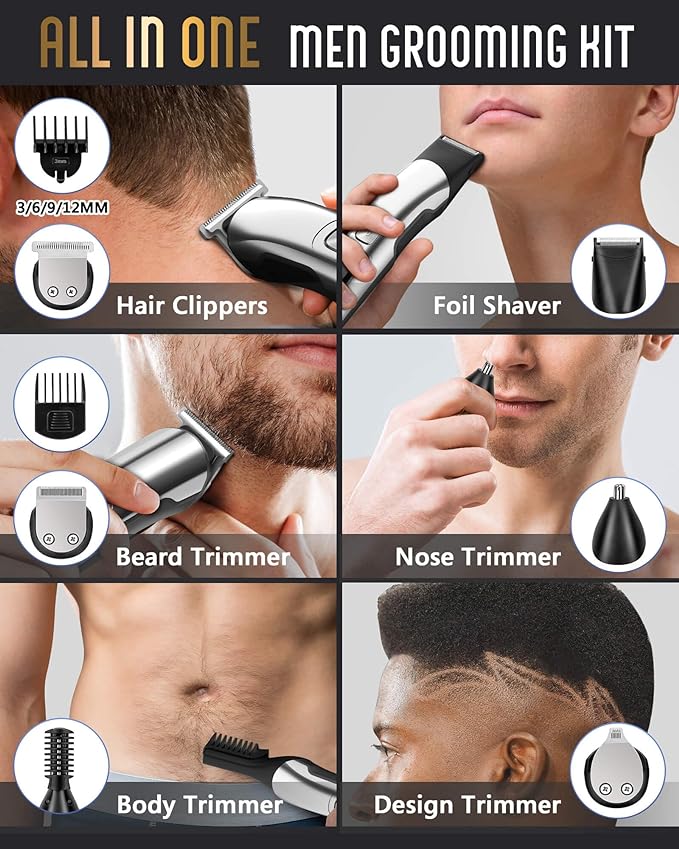
Growing a Healthy Beard
A healthy beard starts with proper care and attention right from the beginning stages of growth. Here are key tips to foster a robust beard:
- Nutrition and Health: Like the hair on your head, your beard needs nutrients to grow thick and strong. Ensure your diet is rich in vitamins A, B, C, and E, which contribute to hair strength and growth. Supplements like biotin can also promote healthier hair.
- Patience and Time: Beards don’t grow overnight. It’s important to give your beard at least a month to grow out before shaping it. This allows you to see the natural growth pattern and thickness, and helps you choose a style that suits your beard type and face shape.
- Regular Washing: Use a gentle beard shampoo a few times a week to keep your beard clean and free from daily grime and leftover food. This prevents skin irritation and keeps your beard hair healthy.
- Hydration and Conditioning: Beard hair can become quite coarse. Regular use of beard oil or balm will keep the hair soft and manageable. These products also moisturize the skin underneath, which can become dry and itchy.
Beard Styling and Care: Men’s Groomer
Once your beard reaches a significant length, proper styling and maintenance are crucial:
- Trimming: Invest in a good quality trimmer with various guard lengths. Regular trimming helps maintain the shape of your beard and removes split ends. For those preferring a more styled look, it might be worth visiting a barber who can sculpt your beard professionally.
- Beard Tools: Using the right tools can make all the difference. A beard comb or brush helps distribute oils evenly and detangles the hair, which prepares it for trimming and keeps it neat. Brushes made from boar bristles are especially good for training your beard to grow in the desired direction.
- Styling Products: Beyond oils and balms, consider using a styling wax for more hold if your beard is particularly unruly. This helps in maintaining a polished look throughout the day.
- Dandruff and Itchiness: Beard dandruff can be a common issue as the skin underneath your beard sheds dead cells. Using a specially formulated beard dandruff shampoo can alleviate this problem. Additionally, make sure you’re moisturizing the skin under your beard regularly with beard oil or a lightweight moisturizer.
- Daily Routine: Incorporate beard care into your daily routine. Brush your beard in the morning, apply oil or balm, and give it a quick comb-through to keep it looking tidy and in place.

Advanced Beard Grooming Tips
For those who are serious about beard grooming, consider the following advanced tips:
- Night Treatments: Apply beard oil or balm before bed to condition your beard overnight, helping to improve texture and manageability.
- Softening Treatments: For especially coarse beards, a beard mask or deep conditioning treatment can soften the hair and make it easier to style.
- Professional Shaping: Regular visits to a professional barber can help maintain the optimal shape of your beard as it grows. They can also provide tailored advice based on the particular needs of your beard type and skin.
Essential Tools for Every Grooming Kit
- A high-quality razor
- Beard trimmer
- Nail clippers
- Tweezers
- A good comb or brush
- Cream Powder
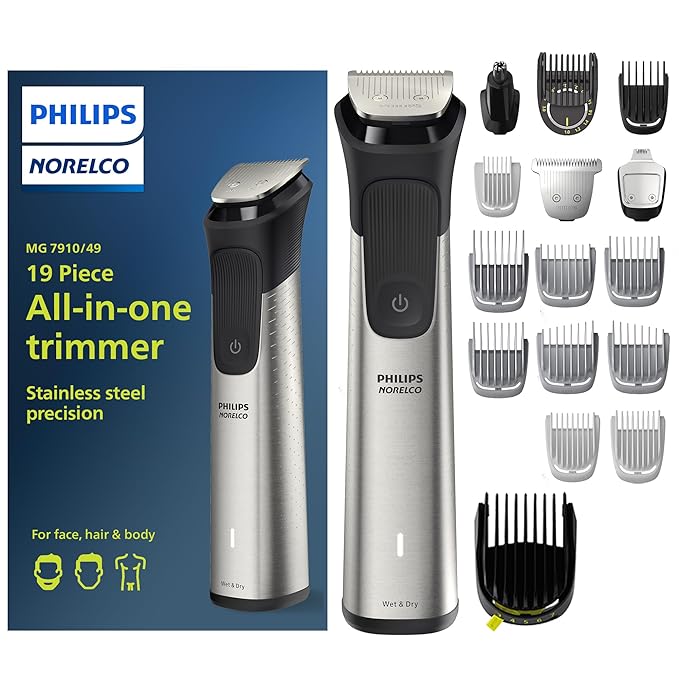
High-Tech Grooming Gadgets
1. Electric Cleansing Brushes: These devices use sonic technology to deep-clean pores, remove dead skin cells, and exfoliate the skin more effectively than traditional hand washing. Popular brands like Clarisonic offer a variety of brush heads tailored to different skin types and concerns.
2. High-Precision Trimmers: Modern trimmers come with multiple attachments and length settings to provide precise control over hair grooming. They are ideal for maintaining facial hair, body hair, and detailing around ears and nose. Brands like Philips Norelco and Braun are leaders in this technology.
3. Laser Hair Removal Devices: Home laser hair removal devices allow for long-term hair reduction from the comfort of your home. These gadgets use light pulses to disable hair follicles and reduce hair growth over time. The Tria Beauty Hair Removal Laser is one example that’s designed for personal use.
4. Smart Toothbrushes: These toothbrushes come equipped with sensors that monitor your brushing technique, duration, and pressure, often syncing this data to a smartphone app. This technology can help improve your oral hygiene significantly. Philips Sonicare and Oral-B are prominent brands offering smart toothbrushes.
5. Advanced Hair Dryers: Newer hair dryers like the Dyson Supersonic use intelligent heat control technology to prevent extreme heat damage and protect natural shine. These devices are engineered to dry hair quickly while improving smoothness and adding volume.
6. Beard Shaping Tools: Innovative beard shapers combine trimming tools with laser-guided precision to ensure symmetrical and well-defined beard lines, making it easier to achieve professional-quality styling at home.
7. Electric Shavers with Cooling Technology: Some advanced electric shavers feature technology to cool the skin while shaving, reducing razor burn and irritation. The Braun CoolTec shaver is an example of such innovation.
8. Skincare Analyzers: These devices, like the Neutrogena Skin360, use sensors to measure skin moisture levels, pore size, and wrinkle depth, providing personalized skincare recommendations based on real-time data.
9. Automated Makeup Applicators: For those who use makeup, tools like the Temptu Air provide a handheld, airbrush makeup application system that delivers effortless, professional-quality results.
10. UV Sanitizers for Grooming Tools: Given the importance of hygiene, UV sanitizers can be used to clean grooming tools such as toothbrushes, razors, and hairbrushes, ensuring they are free from bacteria and other microbes.
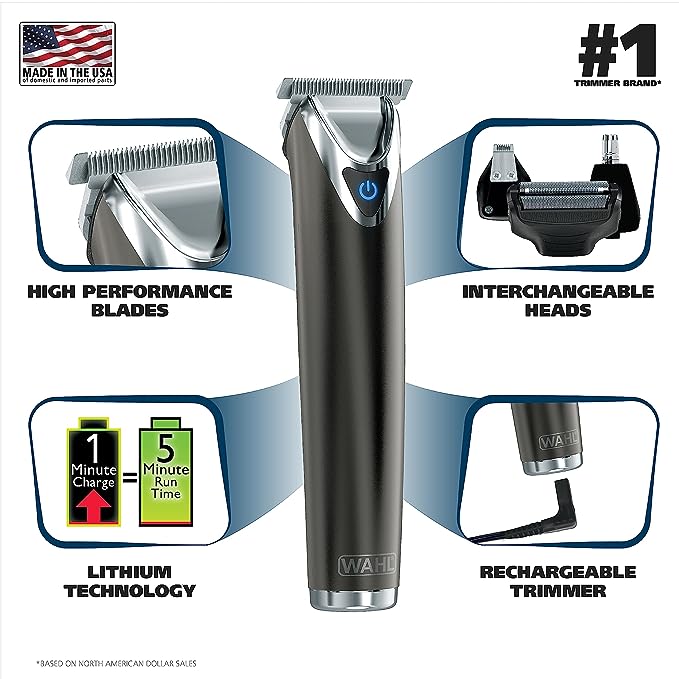
Daily Grooming Routine
Establishing a consistent daily grooming routine is essential for maintaining good hygiene, promoting skin health, and ensuring you always look and feel your best. Here’s a comprehensive guide to crafting an effective daily grooming routine.
Morning Grooming Rituals Men Grooming
A robust morning routine sets the tone for the day. Here’s how to kickstart your morning with essential grooming practices:
- Cleansing: Start with a gentle facial cleanser to remove any oils or residues accumulated overnight. This helps refresh your skin and prepares it for further grooming products.
- Hydration: After cleansing, apply a lightweight moisturizer that suits your skin type. For those with oily or combination skin, opt for an oil-free formula to keep the skin balanced throughout the day.
- Hair Styling: Wash your hair with a suitable shampoo and conditioner every other day or as needed based on your hair type. Apply a minimal amount of styling product to keep your hair in place without weighing it down.
- Shaving or Beard Care: If you shave, do so after showering when your hair is softer and your pores are open, using a quality shaving cream and a sharp razor to protect your skin. If you have a beard, apply beard oil to keep it soft and neat, then comb it through to style.
- Sun Protection: Finish your morning routine with a sunscreen application, even on cloudy days. Choose a broad-spectrum SPF of at least 30 to protect your skin from harmful UV rays.
- Deodorant or Antiperspirant: Apply a deodorant or antiperspirant to stay fresh. Choose a product that works well with your body chemistry to effectively control odor and perspiration.
Nighttime Grooming Habits Men Grooming
Your evening routine is crucial for repairing and rejuvenating your skin after a long day. Here’s what to include:
- Deep Cleansing: Use a cleanser to thoroughly remove dirt, pollution, and buildup from the day. This step is crucial for preventing breakouts and keeping the skin clear.
- Exfoliation: Depending on your skin type, incorporate gentle exfoliation into your routine 2-3 times a week to remove dead skin cells and enhance skin regeneration.
- Night Cream: Apply a night cream or a heavier moisturizer in the evening. These are typically richer in texture and designed to hydrate and repair the skin overnight.
- Eye Cream: Consider using an eye cream to target dark circles, puffiness, and fine lines. The skin around your eyes is delicate and often shows the first signs of aging.
- Lip Care: Apply a hydrating lip balm to treat and prevent chapped lips overnight.
- Hand and Foot Care: Moisturize your hands and feet, especially if you’re prone to dryness. Using a heavier cream or ointment can prevent cracking and roughness.
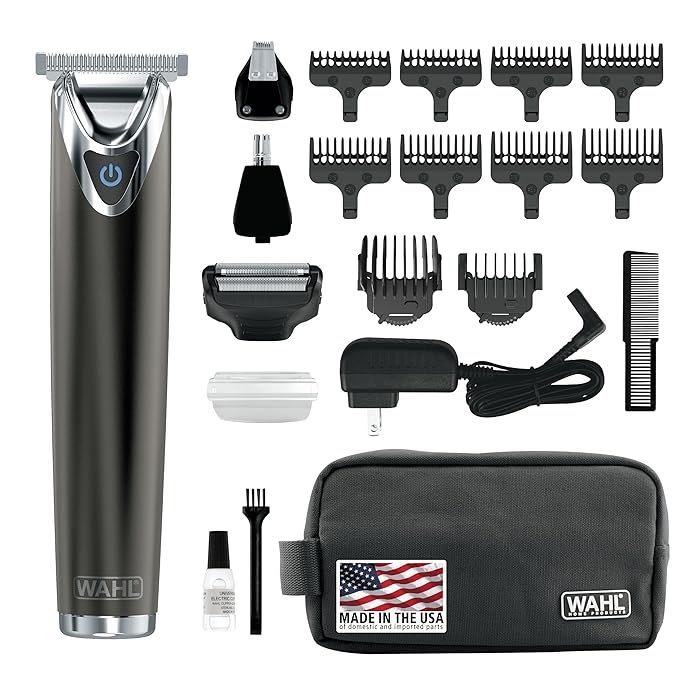
General Tips for Daily Grooming
- Stay Consistent: The key to seeing results from your grooming routine is consistency. Make it a part of your daily life, just like eating or sleeping.
- Adjust Seasonally: Adapt your grooming products and practices according to the seasons. For instance, you might need a heavier moisturizer in winter and a lighter one during summer.
- Hydration and Diet: What you put into your body is as important as what you put on your skin. Stay hydrated and maintain a balanced diet rich in fruits, vegetables, and healthy fats to support your grooming efforts.
Grooming for Special Occasions
For special events, consider a professional barber’s touch for a haircut and shave, and don’t forget a manicure for a polished appearance. For sudden plans, quick wipes can freshen up your face and underarms, and a dash of dry shampoo can revitalize your hair.
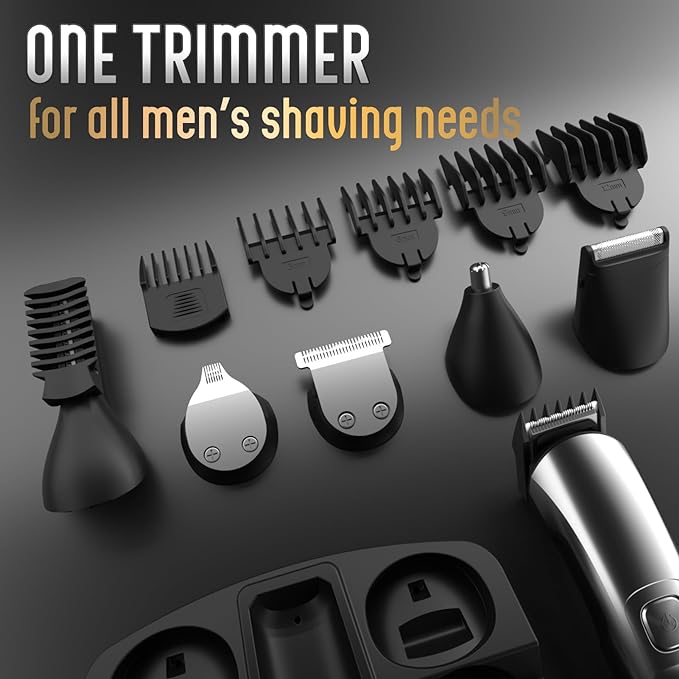
Addressing Body Grooming
Body grooming, while sometimes overlooked, is a crucial component of a comprehensive personal care routine. Here’s how to effectively manage and maintain body grooming to ensure comfort, cleanliness, and overall health.
Techniques for Body Hair Management
The approach to body hair can vary greatly depending on personal preference, comfort, and cultural norms. Here are some general guidelines for managing body hair:
- Trimming: For many, trimming is the preferred method for controlling body hair as it reduces bulk without completely removing the hair. Use a good quality body groomer with adjustable settings to manage different lengths depending on the area (like chest, back, arms, and legs).
- Shaving: Shaving is suitable for those who prefer a smoother look. Always use a new, clean razor to prevent irritation and infections. Shaving creams or gels can help provide a barrier that protects the skin from cuts and can soothe the skin.
- Waxing: Offering longer-lasting results, waxing can be an effective method for removing body hair. It’s generally recommended to have waxing done professionally to minimize pain and ensure proper technique, which can reduce the risk of ingrown hairs.
- Laser Hair Removal: For a more permanent solution, laser hair removal can significantly reduce hair growth over time. Consult with a certified dermatologist or a specialized technician to discuss your options.
Skin Care Beyond the Face
Caring for the skin on your body is as important as facial skincare, especially since body skin can be prone to dryness, irritation, and other issues.
- Cleansing: Use a gentle body wash that matches your skin type. For sensitive or dry skin, choose formulations that are free of harsh sulfates and are moisturizing.
- Exfoliating: Regular exfoliation helps remove dead skin cells and can improve skin texture and appearance. A body scrub or a loofah can be used a couple of times a week to help keep skin smooth and reduce the likelihood of ingrown hairs, particularly after hair removal.
- Moisturizing: Daily moisturizing is essential to maintain the skin’s hydration, especially after showering. Look for lotions or creams that contain ingredients like hyaluronic acid, ceramides, or natural oils like shea butter, which help to lock in moisture.
Special Considerations for Body Grooming
- Sensitive Areas: Areas such as the underarms and groin require special attention due to their sensitivity. Use products designed specifically for these areas to reduce the risk of irritation.
- Foot Care: Regular foot care, including exfoliating dead skin and moisturizing, can prevent problems like calluses and cracked heels. For those who are particularly active or prone to foot issues, occasional pedicures or using specialized foot care products can be beneficial.
- Hand Care: Hands are often the first part of the body to show signs of aging due to constant exposure and activity. Regular use of hand cream and minimal exposure to harsh chemicals can keep your hands looking and feeling soft.
- Back Care: The back can be a challenging area to maintain due to its hard-to-reach location. Using tools like a long-handled brush or getting occasional professional treatments like a back facial can help manage acne and ensure the skin on your back is as cared for as the rest of your body.

Common Grooming Mistakes to Avoid
Proper grooming is essential for a polished look, but common pitfalls can easily undermine your efforts. Here are some crucial grooming mistakes to avoid, ensuring you maintain a clean, attractive appearance.
Overlooking Important Grooming Areas
It’s easy to focus on the face and hair and forget other critical areas that contribute significantly to overall grooming:
- Eyebrows: Unkempt eyebrows can overshadow the most meticulously groomed beard or hairstyle. Regular trimming and shaping of your eyebrows can frame your face and enhance your facial features.
- Ears and Nose: Hair protruding from ears and nose is a common issue as men age. Regular trimming with a dedicated ear and nose hair trimmer can keep these areas neat.
- Nails: Dirty or overgrown fingernails and toenails can detract from your overall appearance. Maintain clean, neatly trimmed nails, and consider a professional manicure occasionally, especially if you work with your hands.
Over- or Under-Doing It
Finding the right balance in grooming is essential, as too much or too little can both have negative impacts:
- Over-styling: Using too much hair product can lead to a greasy, unappealing look. Aim for a natural style with minimal product to enhance rather than overpower your natural hair.
- Under-grooming: Skipping daily routines like face washing or moisturizing can lead to skin problems over time. Establish and stick to a daily skincare and grooming regimen to keep your skin healthy and looking its best.
- Ignoring Skin Care: Many men overlook the importance of skin care beyond shaving. Regular use of a good cleanser, an exfoliator, and a moisturizer suited to your skin type can prevent a multitude of skin issues, including premature aging and acne.
Using the Wrong Products
Choosing the wrong products for your hair type, skin type, or hygiene needs can lead not only to ineffective care but also to potential damage:
- Hair Products: Using a shampoo designed for oily hair when you have dry scalp can exacerbate scalp issues. Always choose hair and styling products that match your hair’s characteristics and needs.
- Skin Products: Similarly, using heavy, oil-based face creams on oily skin can lead to breakouts, while using harsh acne treatments on dry skin can cause irritation and flaking.
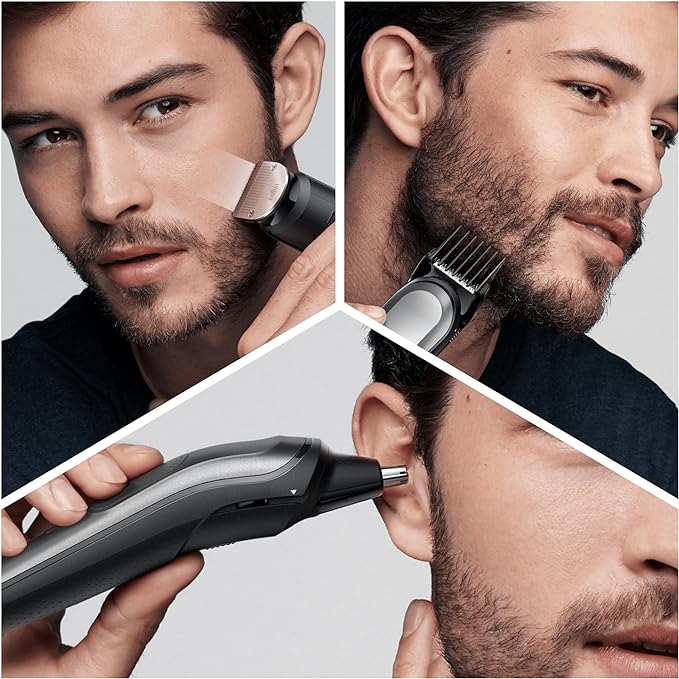
Neglecting Professional Care
While many grooming tasks can be handled at home, professional care has its place:
- Infrequent Haircuts: Stretching out the time between haircuts to save money or time can result in an unkempt appearance. Regular visits to a barber can keep your hairstyle sharp and in good shape.
- DIY Extremes: Attempting complex styling or treatments at home—like chemical peels or significant hair color changes—can lead to disasters. Some things are best left to professionals.
Forgetting Post-Grooming Care
Aftercare is just as important as the grooming process itself:
- After-Shave Care: Neglecting to use after-shave products can lead to razor burn or ingrown hairs. Always use a soothing balm or moisturizer after shaving.
- Post-Haircut Routines: After getting a haircut, ask your barber for tips on how to best maintain the look. Using the right styling products and techniques can make your style last longer and look better.
Conclusion
This comprehensive guide covers all aspects of men’s grooming. Remember, grooming is not just about appearance; it’s a fundamental aspect of your health and well-being. Regular grooming not only helps you look good but feel good too, enhancing both your confidence and your professional image.
This article is designed to be both informative and engaging, using conversational language to connect with readers while delivering valuable grooming tips and techniques.




